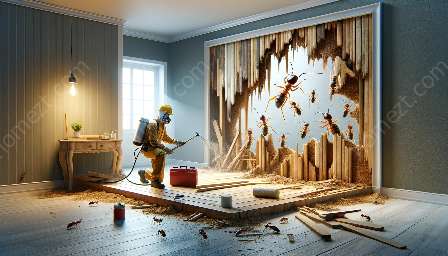Termites are a significant concern for homeowners and property managers, causing billions of dollars in damage each year. To combat this threat, termite barriers play a crucial role in effective pest control. In this guide, we'll explore the ins and outs of termite barriers, their importance in protecting properties, and their compatibility with pest control measures.
The Threat of Termites
Before delving into termite barriers, it's essential to understand the threat that termites pose. Termites are known for their destructive feeding habits, targeting wood, paper, and other cellulose materials within homes and buildings. Their relentless foraging can lead to severe structural damage, jeopardizing the integrity of any property.
The Role of Termite Barriers
Termite barriers are proactive measures designed to prevent termites from infiltrating structures and causing damage. These barriers act as a physical or chemical line of defense, deterring termites from accessing the property or eradicating them upon contact. By implementing termite barriers, property owners can safeguard their investments and minimize the risk of structural compromise due to termite activity.
Types of Termite Barriers
There are various types of termite barriers, each offering unique advantages and suitability for different environments. Physical termite barriers encompass materials such as stainless steel mesh, crushed rock, or concrete, creating a physical barrier that termites cannot penetrate. Chemical termite barriers, on the other hand, involve applying liquid termiticides or baiting systems to the soil or building materials, aiming to kill termites upon contact or ingestion.
Additionally, termite barriers can be categorized as pre-construction or post-construction barriers. Pre-construction barriers are installed during the building process, integrated into the property's foundation or perimeter. Post-construction barriers, on the other hand, are retrofitted solutions implemented in existing structures to fortify them against termite intrusion.
Compatibility with Pest Control Measures
Termite barriers complement and enhance overall pest control measures by specifically targeting termite infestations. When incorporated as part of a comprehensive pest management plan, termite barriers contribute to a multi-faceted approach that effectively mitigates the risk of termite damage. As an integral component of pest control, termite barriers work synergistically with other tactics, such as regular inspections, moisture control, and proper building maintenance, to create a fortified defense against termites.
Professional Installation and Maintenance
For optimal efficacy, it's imperative to engage professionals for the installation and maintenance of termite barriers. Qualified pest control experts have the expertise to assess the property, recommend the most suitable type of barrier, and ensure precise installation. Furthermore, routine inspections and maintenance by professionals are essential to uphold the integrity and functionality of termite barriers, providing continued protection against termites.
Conclusion
Termite barriers are indispensable assets in the fight against termite infestations, offering proactive defense and peace of mind for property owners. By understanding their significance and compatibility with pest control strategies, individuals can make informed decisions to safeguard their properties from the pervasive threat of termites.




















































